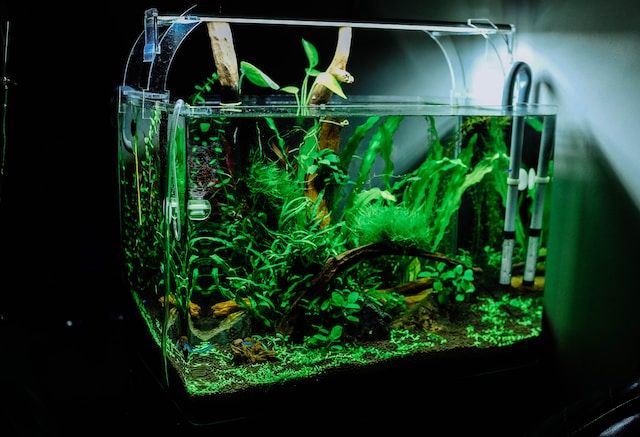Table of Contents
When setting up a freshwater fish tank, one of the most important factors to consider is the temperature of the water. Different types of fish have different temperature requirements, so it’s important to research the ideal temperature range for the specific species you plan to keep.
Maintaining the correct temperature is crucial to the health and well-being of your fish, as well as their ability to thrive and reproduce.
The ideal temperature for freshwater fish tanks can vary widely depending on the species of fish you plan to keep. Some fish prefer cooler water temperatures, while others thrive in warmer waters. In general, most freshwater fish prefer a temperature range between 72-82°F (22-28°C).
However, it’s important to note that some species may require temperatures outside of this range to remain healthy and happy.
Why Temperature is Important
When it comes to keeping fish in a freshwater aquarium, temperature is a crucial factor to consider. The ideal temperature for your fish tank depends on the type of fish you have and their natural habitat. In general, most freshwater fish prefer a temperature range of 72-82°F (22-28°C).
Maintaining the correct temperature is important for several reasons. First, it directly affects the health and well-being of your fish.
If the water is too cold, your fish may become lethargic, lose their appetite, and even become susceptible to disease. On the other hand, if the water is too warm, it can cause stress, oxygen depletion, and even death.
Second, temperature affects the biological processes that occur in your aquarium. For example, the rate of metabolism, digestion, and waste production all increase as the temperature rises.
This means that if the temperature is too high, your fish will produce more waste, which can lead to poor water quality and the growth of harmful bacteria.
Third, temperature affects the growth and development of your fish. Some species of fish have specific temperature requirements for optimal growth and reproduction.
For example, the ideal temperature for breeding angelfish is between 78-82°F (26-28°C), while neon tetras prefer a cooler temperature of around 70-75°F (21-24°C).
To ensure that your fish are healthy and thriving, it is important to monitor and maintain the temperature of your freshwater aquarium. Use a reliable thermometer to check the water temperature regularly, and make adjustments as necessary.
By providing your fish with the ideal temperature range, you can help them live long, healthy lives in your aquarium.
Factors to Consider
When setting up a freshwater aquarium, one of the most important things to consider is the ideal temperature for your fish.
However, there are several factors to consider when determining the ideal temperature for your fish tank. Here are a few things to keep in mind:
Fish Species
Different fish species have different temperature requirements. Some fish prefer warmer water, while others prefer cooler water.
For example, tropical fish like guppies and tetras prefer water temperatures between 75-80°F, while goldfish prefer cooler water temperatures between 65-68°F.
Therefore, it is important to research the temperature requirements of the fish species you want to keep before setting up your aquarium.
Aquarium Size
The size of your aquarium can also affect the temperature of the water. Smaller aquariums tend to heat up more quickly than larger aquariums, and they can also cool down more quickly.
Therefore, it is important to choose a heating system that is appropriate for the size of your aquarium. A good rule of thumb is to have 5 watts of heating power per gallon of water in your aquarium.
Heating Equipment
There are several types of heating equipment available for aquariums, including submersible heaters, hang-on heaters, and undergravel heaters.
Submersible heaters are the most common type of heater and are designed to be fully submerged in the water. Hang-on heaters are designed to hang on the back of your aquarium, while undergravel heaters are placed beneath the gravel in your aquarium.
When choosing a heating system, make sure to choose one that is appropriate for the size of your aquarium and the temperature requirements of your fish.
In summary, when determining the ideal temperature for your freshwater aquarium, it is important to consider the temperature requirements of your fish species, the size of your aquarium, and the type of heating equipment you will be using.
By taking these factors into consideration, you can create a comfortable and healthy environment for your fish.
Ideal Temperature Range
Maintaining the ideal temperature for your freshwater fish tank is crucial for the health and wellbeing of your fish.
The temperature range for your fish tank can vary depending on the species of fish you have, but generally, the ideal temperature range for most freshwater fish is between 72°F to 82°F (22°C to 28°C).
It’s important to note that different species of fish have different temperature requirements. For example, tropical fish like angelfish, tetras, and guppies prefer a temperature range of 75°F to 80°F (24°C to 27°C), while goldfish prefer a cooler temperature range of 65°F to 68°F (18°C to 20°C).
Therefore, it’s important to research the specific temperature requirements for the fish species you have in your tank.
Maintaining a consistent temperature is also important. Fluctuations in temperature can cause stress to your fish, which can lead to health problems. It’s recommended to use a reliable thermometer to monitor the temperature of your tank and make adjustments as necessary.
Here are some tips to help you maintain the ideal temperature range for your freshwater fish tank:
- Use a heater: A heater is an essential piece of equipment for maintaining a consistent temperature in your fish tank. Choose a heater that is appropriate for the size of your tank and the temperature requirements of your fish.
- Keep your tank away from direct sunlight: Direct sunlight can cause the temperature of your tank to fluctuate, which can be harmful to your fish. Place your tank in a location that is away from direct sunlight or use a cover to block out the sun.
- Monitor the temperature regularly: Use a reliable thermometer to monitor the temperature of your tank regularly. If you notice any fluctuations, adjust the temperature accordingly.
By maintaining the ideal temperature range for your freshwater fish tank, you can help ensure the health and wellbeing of your fish.
Remember to research the specific temperature requirements for your fish species and monitor the temperature regularly to keep your fish happy and healthy.
How to Maintain the Ideal Temperature
Maintaining the ideal temperature for your freshwater fish tank is crucial for the health and well-being of your fish. The ideal temperature range for most freshwater fish is between 72°F to 82°F (22°C to 28°C).
However, different species of fish have different temperature preferences, so it’s important to research the specific needs of your fish before setting the temperature.
Here are some tips on how to maintain the ideal temperature for your freshwater fish tank:
Use a Reliable Aquarium Thermometer
The first step in maintaining the ideal temperature is to use a reliable aquarium thermometer. Digital thermometers are the most accurate and easy to read.
Place the thermometer on the opposite side of the tank from the heater to get an accurate reading of the tank’s temperature.
Choose the Right Heater
Choosing the right heater is crucial for maintaining the ideal temperature. A good rule of thumb is to choose a heater that can heat your tank at a rate of 5 watts per gallon. For example, if you have a 20-gallon tank, you will need a 100-watt heater.
Keep the Heater Clean
To ensure that your heater is working properly, it’s important to keep it clean. Regularly check the heater for any buildup of algae or debris and clean it as needed.
Monitor the Temperature Regularly
It’s important to monitor the temperature of your tank regularly to ensure that it remains within the ideal range. Check the temperature at least once a day and adjust the heater as needed.
Consider Using a Chiller
If the temperature in your home or office regularly exceeds the ideal range for your fish, you may want to consider using a chiller to maintain the temperature.
Chillers work by removing heat from the water and are especially useful in hot climates or during the summer months.
By following these tips, you can maintain the ideal temperature for your freshwater fish tank and ensure the health and well-being of your fish.
Common Mistakes to Avoid
When it comes to setting up a fresh water fish tank, there are a few common mistakes that many people make. Here are some things to keep in mind to avoid these mistakes:
Not Checking the Ideal Temperature Range
One of the most important factors to consider when setting up a fresh water fish tank is the temperature range.
Different species of fish have different ideal temperature ranges, and it’s important to research this before adding any fish to your tank.
Make sure to invest in a good quality thermometer to monitor the temperature of the water regularly. Keep in mind that sudden changes in temperature can be harmful to your fish, so avoid placing your tank near windows or areas with direct sunlight.
Overfeeding Your Fish
Overfeeding your fish is a common mistake that can lead to a number of problems. Not only can it cause your fish to become overweight, but it can also lead to poor water quality and an increase in harmful bacteria.
Make sure to feed your fish only what they need, and avoid leaving excess food in the tank. A good rule of thumb is to feed your fish small amounts multiple times a day, rather than one large feeding.
Not Maintaining Proper Water Quality
Maintaining proper water quality is essential for the health of your fish. This includes regular water changes, monitoring the pH level, and ensuring adequate filtration.
Make sure to test your water regularly and adjust your filtration system as needed. Avoid using harsh chemicals or cleaning agents in your tank, as this can disrupt the delicate balance of the ecosystem.
Overcrowding Your Tank
Overcrowding your tank is another common mistake that can lead to a number of problems. Not only can it cause stress and aggression among your fish, but it can also lead to poor water quality and an increase in harmful bacteria.
Make sure to research the ideal number of fish for your tank size and species, and avoid adding too many fish at once.
Keep in mind that some fish require more space than others, so make sure to take this into account when planning your tank setup.
By avoiding these common mistakes, you can ensure the health and happiness of your fish and create a beautiful, thriving aquarium.







